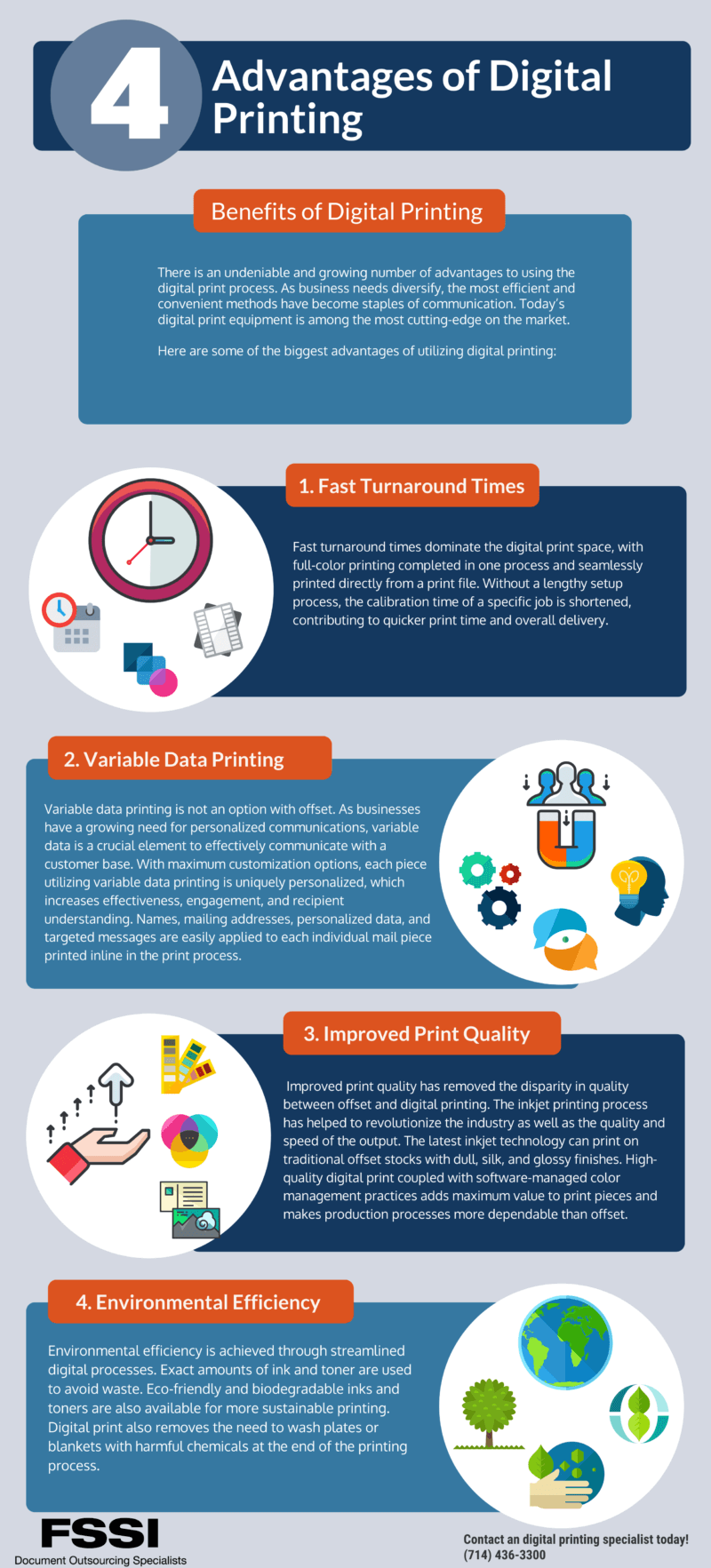The Main Principles Of 24hr Media
The Main Principles Of 24hr Media
Blog Article
What Does 24hr Media Do?
Table of ContentsWhat Does 24hr Media Do?Some Known Details About 24hr Media How 24hr Media can Save You Time, Stress, and Money.8 Easy Facts About 24hr Media ExplainedThings about 24hr Media
Offset, gravure printing and flexography are one of the most common sorts of traditional printing in the product packaging space and each involves moving the photo from a plate to the surface area. To do this, first home plate requires to be developed, and it is the production of these plates that take some time, and set you back cash.According to PMMI, electronic printing enables brands and manufacturers to respond rapidly to customer demands while enhancing the supply chain, minimizing warehousing price and waste, and appreciating faster time to market. That all noises great, but exactly how does this technology do all that? The major differentiator of these modern technologies is that there are no set-up fees and no plates with digital printing.
According to Wikipedia, the best distinction between digital printing and typical methods such as lithography, flexography, gravure, or letterpress is that there is no requirement to replace printing plates in electronic printing, whereas in these analog printing techniques the plates are repetitively changed. This leads to quicker turnaround time and lowers cost when utilizing electronic printing.

Fast production suggests obtaining your item to market quicker. It additionally suggests it's easier and faster to make adjustments in the future, when you transform a recipe, include a SKU, or develop seasonal product packaging. Digital printing is highly versatile, so it's very easy to make changes to the bundle layout rapidly. Everything returns to the plates.
5 Simple Techniques For 24hr Media
With standard printing techniques, short-run printing is simply not possible. Because a terrific design can make or break your item, electronic printing constantly develops premium, clear and colorful graphics each time.
Filling ... Are you acquainted with the benefits of electronic printing? Both offset and electronic printing have their area in the printing market.
In this post, we will go over the advantages of digital printing to aid you much better understand if digital printing is simply what you require. Put simply - digital printing prints product straight onto the paper. It eliminates some actions required in balanced out printing, like producing metal plates. Inkjet printers utilize small nozzles to spray droplets of ink onto the substrate.
A Biased View of 24hr Media
As digital printing constantly evolves, it uses a lot more possibilities and greater output quality daily. In some situations, the print high quality can be as high regarding offset printing. As years go by, digital print is becoming much more accessible, with boosted speed and quality. This is simply the factor printing business are adding digital printing to their offer.
For offset printing, if any type of blunder goes undetected before developing the plates, there will be a high expense of creating a brand-new one. But, with digital printing, this is not the case. Everyone always hopes there will be no mistakes, understanding the price of remedying them if they occur is always a good concept.
This means every item will look the same, so the opportunity you will need to dispose of any of them due to disparities is low. Since a proofing sample is printed on the exact same equipment as the item itself, shade proofing is extremely precise. the original source Any troubles with shade will certainly be visible on the evidence, and thus it will be possible to change it before printing the whole run.
Some Ideas on 24hr Media You Should Know
Digital printing, on the various other hand, requires minimal arrangement. There are less pre-press treatments, so the preliminary setup time is dramatically minimized. Therefore, turnaround is noticeably much faster. Your order can be processed as quickly as you send it. This is great when you are in a rush to obtain your printed materials.

This suggests more ask for electronic on-demand print manufacturing. Every client values a personalized message. Among the benefits of digital printing is that customizing your advertising and marketing products could not be much easier. Cost-efficient, smaller sets enable companies to customize each order. Have a back-to-school sale? Make a flyer to target moms and dads and one more one to target the trainees.
Digital printing is the perfect choice for variable data printing, like personalized codes and addresses on direct-mail advertising. With electronic printing, it is much less troublesome to make last-minute adjustments to your design. Sometimes the most effective form of interaction is not digital. In these cases, depending on digital printing can make certain these orders have a very little environmental effect.
9 Simple Techniques For 24hr Media
There is likewise no need to cleanse the plates after printing. The benefits of digital printing include that there is no waste from added or remaining ink, paper, or chemicals due to the fact that just what's required gets printed. - for extremely short runs, digital printing is the means to go, undeniably.
Gone are the days of complicated setups and lengthy turnaround times - electronic printing has changed the print industry. The printing globe has actually come a lengthy way since the days of Gutenberg's printing machine. The brand-new normal is structured procedures and economical remedies for printing onto practically anything you can consider.

Report this page